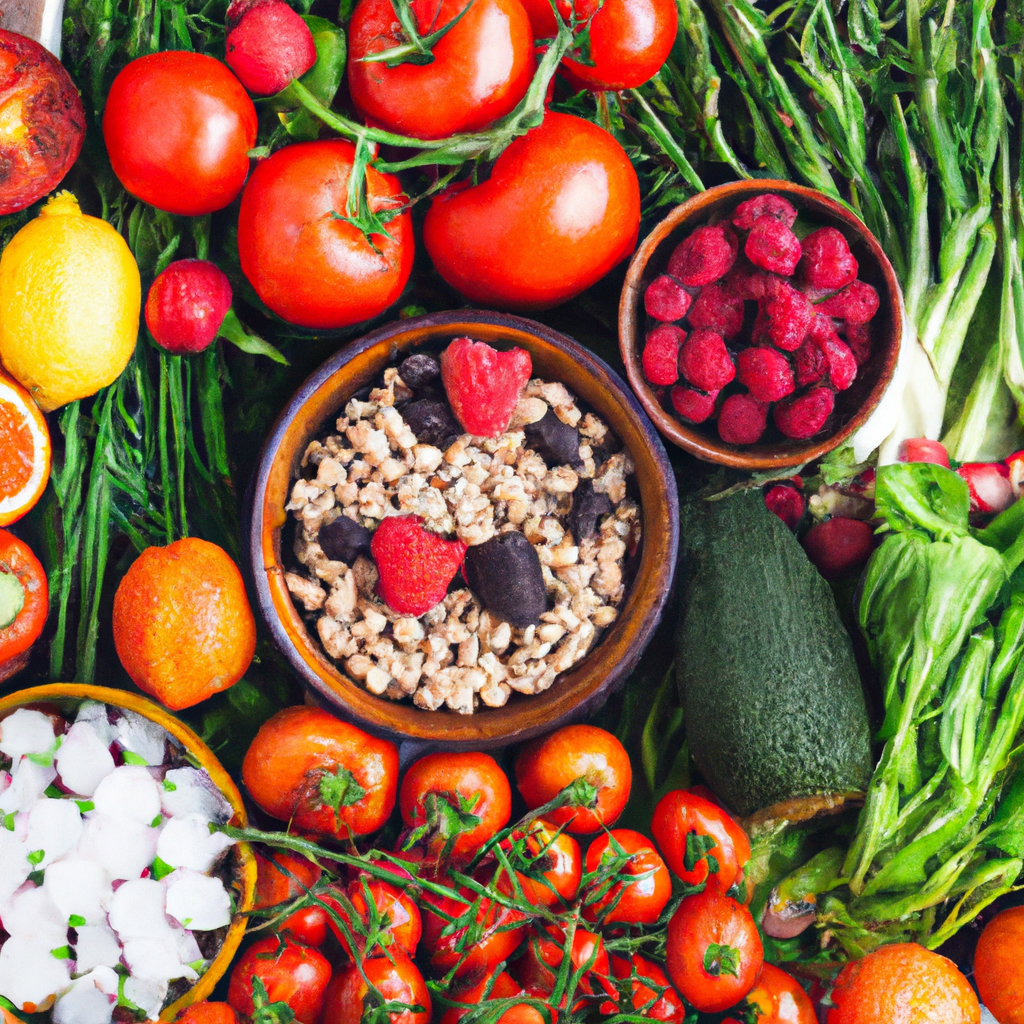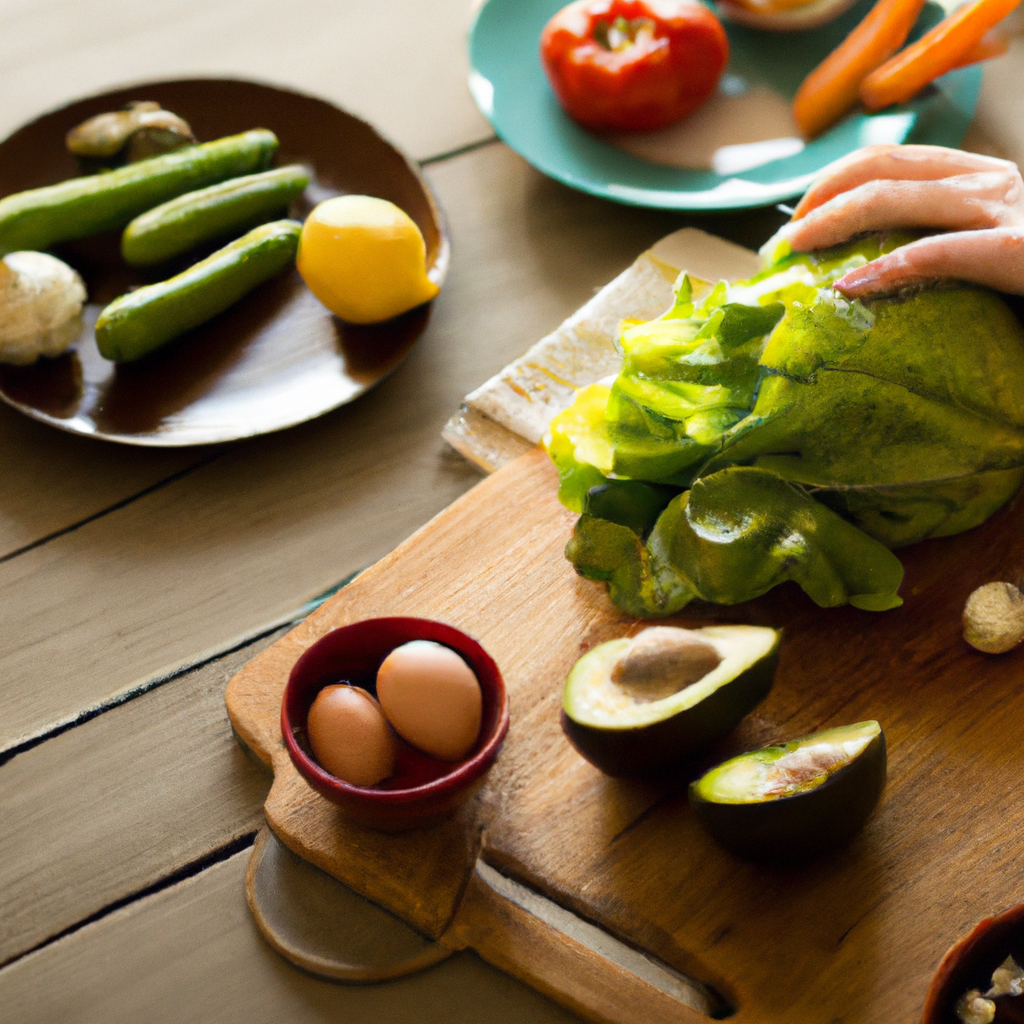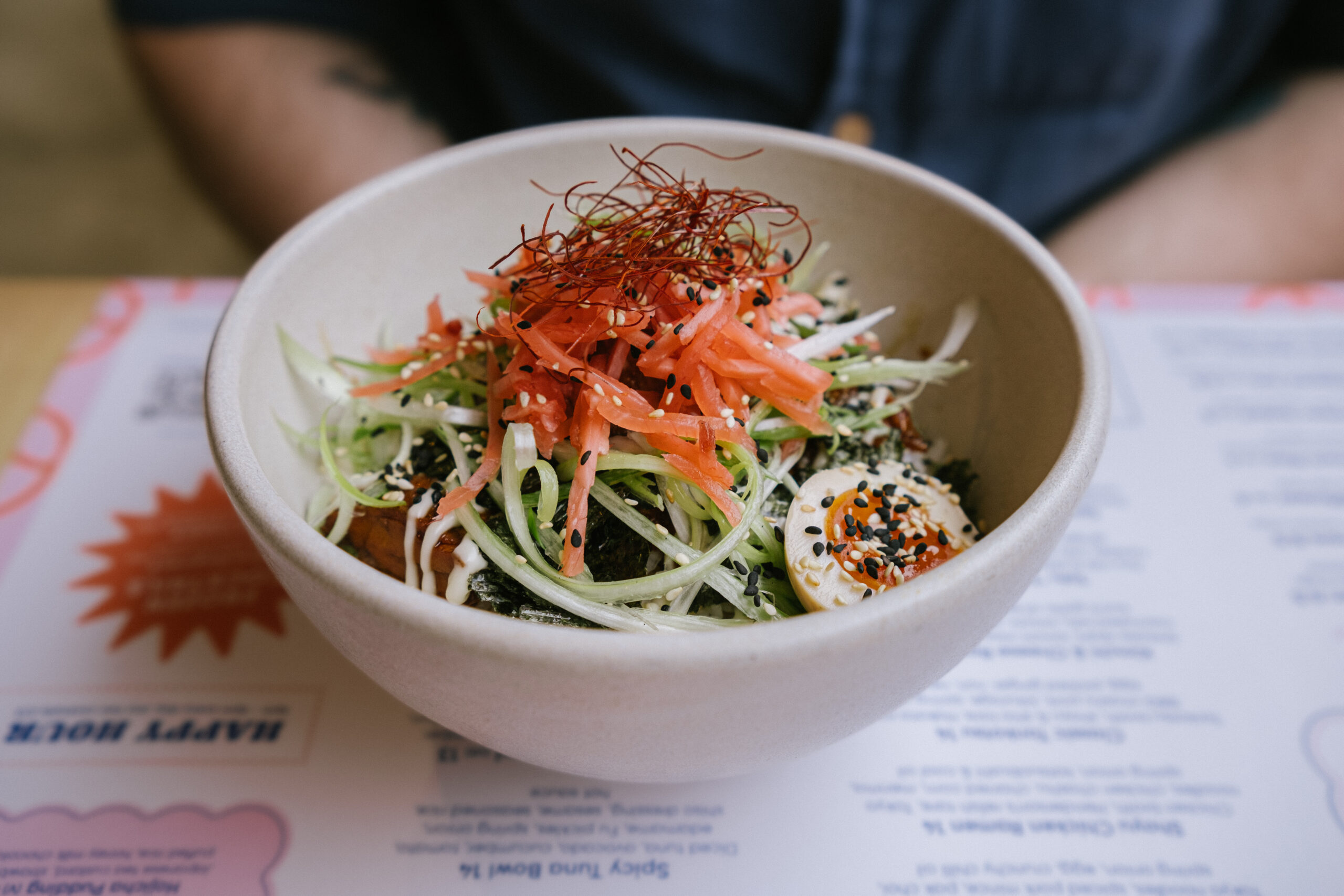Healthy eating, that what most people are all hoping to experience to eat healthier without breaking the bank. Look no further! In this article, we’ll explore the world of healthy meals on a budget and show you that eating nutritious food doesn’t have to drain your wallet.
Whether you’re a student, a young professional, or just trying to save some money, we’ve got you covered.
Discover tips and tricks on how to eat healthy on a shoestring budget, learn the cheapest and healthiest ways to eat, and find out how much longer you could live by adopting a healthy diet.
Get ready to revolutionize your meals and take control of your health without spending a fortune.

This image is the Cooking tips from Famous ChefsCooking tips from Famous Chefsproperty of images.pexels.com.
Cooking tips from Famous Chefs
How do you eat healthy on a shoestring budget?
Eating healthy on a tight budget may seem like a challenge, but with a little planning and creativity, it is definitely possible. By following a few simple strategies, you can nourish your body without breaking the bank. Here are some tips to help you eat healthy on a shoestring budget:
Plan your meals
One of the most effective ways to eat healthy on a budget is to plan your meals in advance. Take some time each week to create a meal plan and make a shopping list based on your planned meals. This will not only save you money by avoiding impulse purchases but also ensure that you have nutritious meals ready to go.
Buy in bulk
Buying in bulk is a great way to save money on groceries. Many items, such as grains, legumes, nuts, and seeds, can be purchased in larger quantities at a lower cost per serving. Consider investing in a membership to a wholesale store or look for bulk bins at your local grocery store. Just make sure to portion out your purchases to avoid any unnecessary waste.
Shop for seasonal produce
Seasonal produce tends to be more affordable and fresher than out-of-season varieties. By choosing fruits and vegetables that are in season, you can save money while still enjoying a wide range of flavors and nutrients. Keep an eye out for local farmers’ markets or join a community-supported agriculture (CSA) program to access affordable, fresh produce.
Cook from scratch
Cooking from scratch allows you to have full control over the ingredients you use and can save you money compared to buying pre-packaged or processed foods. Create a weekly meal plan that incorporates homemade meals and snacks. Not only will this be more budget-friendly, but it will also help you make healthier choices by avoiding added sugars, preservatives, and unhealthy fats.
Opt for plant-based proteins
Plant-based proteins, such as beans, lentils, tofu, and tempeh, are often more affordable than animal proteins. Incorporating these protein sources into your meals can help you save money while still meeting your nutritional needs.
Experiment with different recipes and flavors to make plant-based proteins the star of your meals. You can also try substituting a portion of meat in a recipe with beans or lentils to stretch your grocery budget.
Can you still eat healthy food if you are on a budget?
Yes, absolutely! Eating healthy on a budget may require a bit of extra thought and planning, but it is entirely possible to prioritize your health while sticking to a tight budget.
Here are some strategies to help you eat healthy on a budget:
Choose affordable whole foods
Whole foods, such as fruits, vegetables, whole grains, and lean proteins, are often more affordable than processed or convenience foods. Stock up on staples like brown rice, whole wheat pasta, and canned or dried beans, as these items provide ample nutrition at a lower cost.
Look for sales and discounts on fresh produce and choose frozen varieties when necessary.
Make smart grocery choices
When shopping on a budget, it’s important to make smart grocery choices. Compare prices, check for store brands or generic alternatives, and take advantage of coupons or discounts.
Avoid buying pre-cut or pre-packaged foods, as they tend to be more expensive. Instead, opt for whole fruits and vegetables that can be washed and prepared at home.
Plan your meals in advance
Planning your meals in advance can help you save both time and money. When you know what you’re going to cook, you can make a shopping list and only buy the ingredients you need, avoiding unnecessary purchases.
Meal planning also allows you to make the most of your groceries by repurposing leftovers and using up ingredients before they go bad.
Utilize leftovers
Leftovers are a budget-savvy person’s best friend. Rather than letting food go to waste, get creative and repurpose your leftovers into new meals.
For example, roasted chicken can be shredded and used in tacos or added to a salad, while cooked vegetables can be blended into a soup or added to a stir-fry.
Don’t be afraid to experiment and create delicious meals using what you already have in your refrigerator.
Get creative with low-cost ingredients
Sometimes, you’ll find great deals on ingredients that may not be part of your regular rotation. This is the perfect opportunity to get creative in the kitchen.
Explore new recipes that feature these low-cost ingredients, or experiment by adding them to your favorite dishes. You might discover new flavors and combinations that you absolutely love, all while sticking to your budget.
What is the cheapest and healthiest way to eat?
When it comes to eating on a budget, focusing on staple foods, choosing affordable protein sources, and making the most of inexpensive ingredients are key.
Here are some tips for the cheapest and healthiest way to eat:
Focus on staple foods
Staple foods, such as grains, legumes, and root vegetables, are a budget-friendly and nutritious way to create filling meals. Items like rice, oats, beans, lentils, and potatoes are not only inexpensive but also versatile and packed with essential nutrients.
Build your meals around these affordable staples and add other ingredients as needed.
Opt for cheaper protein sources
Protein is an essential macronutrient, but it doesn’t have to break the bank. Instead of relying heavily on expensive cuts of meat, explore more affordable protein sources.
Eggs, canned tuna, tofu, tempeh, and Greek yogurt are all relatively inexpensive options that provide a good amount of protein.
Additionally, incorporating plant-based proteins like beans and lentils into your diet can provide a cost-effective and nutritious alternative to meat.
Maximize your use of inexpensive ingredients
Look for ways to maximize your use of inexpensive ingredients. For example, buying a whole chicken is often more cost-effective than purchasing individual cuts.
Roast the chicken for a flavorful main dish and use the leftover meat for sandwiches, soups, or salads. Save vegetable scraps, such as onion peels and carrot ends, to make a homemade vegetable broth.
By utilizing every part of an ingredient, you can stretch your budget further.
Buy in-season fruits and veggies
Fruits and vegetables can quickly become expensive, especially if you’re buying ones that are out of season.
Focus on buying produce that is in season, as it tends to be more affordable and fresher. Visit your local farmers’ market or join a CSA program to access a variety of in-season fruits and veggies at a reasonable cost.
You can also stock up on in-season produce and freeze them to enjoy throughout the year.
Don’t overlook frozen fruits and vegetables
Frozen fruits and vegetables are often overlooked but can be an excellent option for eating healthy on a budget. They are just as nutritious as fresh produce and can be more affordable, especially when certain items are out of season.
Frozen fruits are perfect for smoothies, while frozen vegetables can be added to soups, stir-fries, or roasted for a quick side dish. Always check the label to ensure there are no added sugars or preservatives.
Avoid processed and packaged foods
Processed and packaged foods tend to be more expensive and often contain unhealthy additives.
Avoiding these types of foods can not only save you money but also help you improve your overall health. Instead, focus on whole, unprocessed foods and cook your meals from scratch.
This gives you more control over the ingredients and can help you develop healthier eating habits.
How much longer will you live if you eat healthy?
The impact of healthy eating on life expectancy is significant. While no single food or diet can guarantee a longer life, adopting a healthy eating pattern can help reduce the risk of chronic diseases, improve overall quality of life, and increase energy levels and productivity.
Here’s how eating healthy can potentially add more years to your life:
Reducing the risk of chronic diseases
A healthy diet that includes a variety of whole foods, such as fruits, vegetables, whole grains, lean proteins, and healthy fats, can help reduce the risk of chronic diseases like heart disease, type 2 diabetes, and certain types of cancer. These diseases are often linked to poor dietary choices, such as consuming excess added sugars, unhealthy fats, and processed foods. By nourishing your body with nutrient-dense foods, you can help protect your long-term health and potentially add more years to your life.
Improving the overall quality of life
Eating a nutritious diet can have a significant impact on your overall quality of life. A diet that is rich in vitamins, minerals, and antioxidants supports optimal brain function, boosts mood, promotes healthy digestion, and strengthens the immune system.
By prioritizing whole, nutrient-dense foods, you can provide your body with the fuel it needs to function at its best, leading to a higher quality of life and potentially increasing your longevity.
Increasing energy levels and productivity
When you eat a balanced, healthy diet, your body receives the nutrients it needs to produce sustainable energy. Proper nutrition can help improve your energy levels, enhance mental clarity, and boost productivity.
By fueling your body with the right foods, you can optimize your daily performance, accomplish more, and potentially add more years of active, healthy living to your life.
While there are multiple factors that influence life expectancy, choosing a healthy eating pattern can have a positive and lasting impact on your health and well-being.
By incorporating whole, unprocessed foods into your diet, prioritizing nutrient-dense meals, and avoiding harmful substances like excess added sugars and unhealthy fats, you can potentially increase your longevity and enjoy a vibrant, healthy life.

This image is the property of images.pexels.com.
Healthy meals on a budget
Preparing healthy meals on a budget is a smart choice for both your health and your wallet. By following a few simple strategies, you can enjoy nutritious, flavorful meals without breaking the bank.
Here are the benefits of eating healthy meals on a budget and some tips to help you plan and cook affordable and nutritious meals:
Benefits of eating healthy meals on a budget
Eating healthy meals on a budget offers numerous benefits. First and foremost, it allows you to prioritize your health by nourishing your body with essential nutrients. A diet rich in fruits, vegetables, whole grains, and lean proteins can help maintain a healthy weight, reduce the risk of chronic diseases, and boost overall well-being.
By cooking meals at home, you have control over the ingredients you use, avoiding additives and unhealthy fats often found in restaurants or convenience foods.
Lastly, preparing meals on a budget can help you save money in the long run, as homemade meals tend to be more cost-effective than eating out.
Tips for planning affordable and nutritious meals
- Start by creating a weekly meal plan. This helps you make a shopping list and ensures you have all the necessary ingredients on hand. Include a balance of proteins, whole grains, and a variety of fruits and vegetables in your plan.
- Shop for sales and discounts. Check your local grocery store’s weekly ads or browse online for the best deals. Plan your meals around these discounted items to save money.
- Consider using low-cost pantry staples, such as canned beans, lentils, whole grains, and spices, as the base for many of your meals. These ingredients are often affordable, versatile, and packed with nutrients.
- Buy in bulk when possible. Many stores offer bulk bins where you can purchase grains, nuts, seeds, and spices at a lower cost per serving. Portion out your bulk purchases to avoid waste and store them in airtight containers to maintain freshness.
- Utilize leftovers creatively. Transform leftover roasted chicken into a flavorful chicken salad or use cooked vegetables in a frittata. Repurposing leftovers allows you to minimize food waste and stretch your grocery budget further.
- Cook in batches and freeze portions. Prepare large batches of soups, stews, or casseroles and freeze individual portions for future meals. This saves you time and money, as you can quickly reheat a homemade meal when you’re short on time.
- Experiment with low-cost ingredients. Don’t be afraid to try new recipes or flavors. Affordable items like cabbage, sweet potatoes, lentils, and canned fish can be turned into delicious, budget-friendly meals with a little creativity.
Budget-friendly recipes and meal ideas
- Vegetable stir-fry: Saute a mix of colorful vegetables, such as bell peppers, broccoli, carrots, and snap peas, in a bit of oil. Add a splash of low-sodium soy sauce or your favorite stir-fry sauce. Serve over brown rice or whole wheat noodles for a satisfying and budget-friendly meal.
- Quinoa salad: Cook quinoa according to package instructions and let it cool. Mix in chopped cucumbers, tomatoes, bell peppers, and herbs like parsley or cilantro. Drizzle with a simple dressing made from lemon juice, olive oil, salt, and pepper. This refreshing salad is packed with nutrients and can be enjoyed as a main dish or a side.
- Homemade vegetable soup: Saute onions, garlic, and your favorite vegetables in a large pot until they’re tender. Add vegetable broth and bring to a simmer. Season with herbs and spices like thyme, oregano, and black pepper. This comforting and nutritious soup can be made with any combination of vegetables you have on hand.
Ways to minimize food waste
Minimizing food waste is both environmentally and economically beneficial. Here are some tips to help reduce food waste in your kitchen:
- Plan your meals and buy only the ingredients you need. This prevents unused items from going to waste.
- Store food properly to maintain freshness. Use airtight containers or reusable wraps to keep produce, leftovers, and pantry staples fresh for longer.
- Freeze leftovers or excess ingredients before they spoil. Label them with dates and use them in future meals.
- Get creative with using leftovers. Repurpose them into new dishes or incorporate them into lunches for the week.
- Consider composting fruit and vegetable scraps or starting a small herb garden using leftover herb stems.
Making the most of low-cost pantry staples
Pantry staples are essential for creating affordable and nutritious meals. Here are some affordable pantry staples that can serve as the foundation for budget-friendly dishes:
- Rice: Whether it’s brown, white, or wild rice, this versatile grain is a budget-friendly staple that can be used in various recipes, from stir-fries to casseroles.
- Beans and lentils: Canned or dried, beans and lentils are affordable sources of protein, fiber, and essential nutrients. They can be added to soups, stews, salads, or made into tasty spreads like hummus.
- Canned tomatoes: Canned tomatoes are a pantry staple that can be used as a base for sauces, soups, or stews. They are often more affordable than fresh tomatoes and have a long shelf life.
- Oats: A cost-effective breakfast option, oats can be made into a hearty bowl of oatmeal or used as a base for homemade granola bars or baked goods.
- Spices and herbs: Spices and herbs add flavor to any dish. Stock your pantry with essentials like cumin, paprika, oregano, basil, and cinnamon to enhance the taste of your meals without breaking the bank.
By utilizing these affordable pantry staples and incorporating them into your meal planning, you can create a variety of healthy and delicious dishes while keeping your grocery budget in check.
What is the cheapest healthiest food to make?
When it comes to preparing the cheapest and healthiest food, certain recipes and dishes stand out for their affordability and nutritional value. Here are some examples of inexpensive yet nutritious meals:
Brown rice and beans
Brown rice and beans are a classic, inexpensive combination that provides a good balance of protein, fiber, and essential nutrients. Cook brown rice according to package instructions and serve it with seasoned beans for a hearty and budget-friendly meal. You can also add sautéed vegetables or a simple salsa for extra flavor and nutrition.
Vegetable stir-fry
A vegetable stir-fry is an excellent way to utilize affordable and nutritious ingredients. Choose a variety of colorful vegetables, such as bell peppers, broccoli, carrots, and snap peas. Saute them in a bit of oil and flavor with low-sodium soy sauce or your favorite stir-fry sauce. Serve over brown rice or whole wheat noodles for a satisfying and budget-friendly meal.
Oatmeal with fruits
Oatmeal is a nourishing and budget-friendly breakfast option. Cook oats according to package instructions, and then add your favorite fruits, such as sliced bananas, berries, or diced apples. Top with a sprinkle of nuts or seeds for added crunch and nutrition. Oatmeal provides fiber, complex carbohydrates, and essential vitamins and minerals to start your day on a healthy note.
Quinoa salad
Quinoa is a protein-rich, gluten-free grain that pairs well with a variety of vegetables. Cook quinoa according to package instructions and let it cool. Mix in chopped cucumbers, tomatoes, bell peppers, and herbs like parsley or cilantro. Drizzle with a simple dressing made from lemon juice, olive oil, salt, and pepper. This refreshing salad is packed with nutrients and can be enjoyed as a main dish or a side.
Homemade vegetable soup
Homemade vegetable soup is a comforting and budget-friendly option, especially during colder months. Saute onions, garlic, and your favorite vegetables, such as carrots, celery, and zucchini, in a large pot until they’re tender.
Add vegetable broth and bring to a simmer. Season with herbs and spices like thyme, oregano, and black pepper. This nutritious soup can be made with any combination of vegetables you have on hand and can be enjoyed as a meal on its own or as a side dish.
By incorporating these simple and cost-effective recipes into your meal planning, you can nourish your body with nutritious and budget-friendly meals.

This image is the property of images.pexels.com.
How do I cook healthy on a tight budget?
Cooking healthy on a tight budget requires a combination of smart meal planning, strategic grocery shopping, and efficient use of ingredients. Here are some tips to help you cook healthy on a tight budget:
Plan your meals and make a grocery list
Take the time to plan your meals for the week and create a grocery list based on your planned recipes. This helps you avoid impulse purchases and ensures that you have all the necessary ingredients on hand.
Look for meals that use affordable and versatile ingredients like grains, legumes, and seasonal produce.
Buy in bulk and take advantage of sales
Buying in bulk is an excellent way to save money on staple items like grains, legumes, and spices. Look for wholesale stores or bulk bins at your local grocery store.
Additionally, keep an eye out for sales and discounts on fresh produce, proteins, and pantry staples. Stock up on items when they are on sale and plan your meals accordingly.
Choose affordable sources of protein
Protein can be a significant portion of your grocery budget, but there are affordable options available. Opt for cheaper protein sources like canned tuna, eggs, tofu, and legumes.
These options provide a good amount of protein and can be used in a variety of meals. Add beans or lentils to soups, stews, or salads, or experiment with different tofu recipes for a budget-friendly protein option.
Utilize low-cost vegetables and fruits
Choosing low-cost vegetables and fruits can significantly impact your grocery budget. Look for seasonal produce, as it tends to be more affordable and fresher.
Vegetables like carrots, cabbage, sweet potatoes, and greens are often reasonably priced and can be used in a variety of dishes. Frozen vegetables are also a cost-effective option and can be a great choice when fresh produce is out of season or too expensive.
Cook in batches and freeze leftovers
Cooking in large batches and freezing leftovers is an effective way to save time and money. Prepare meals like stews, soups, or casseroles in larger quantities and portion them out into individual servings. Freeze the extra portions for later use.
This strategy allows you to have nutritious homemade meals ready to go when you’re short on time or don’t feel like cooking.
Invest in kitchen essentials and cookware
Having the right kitchen essentials and cookware can make a significant difference when cooking healthy on a tight budget. Invest in basic tools like a sharp knife, cutting board, pots, and pans that meet your cooking needs.
Quality tools will last longer and make meal preparation more efficient. Also, consider investing in versatile appliances like a slow cooker or an instant pot, which can help you cook large quantities of food with minimal effort.
By implementing these strategies and making conscious choices when planning meals and shopping for groceries, you can cook healthy, flavorful meals on a tight budget.
How do you eat healthily when you’re broke?
Eating healthily when you’re broke may require some additional effort and creativity, but it is possible to nourish your body on a limited budget. Here are some tips to help you eat healthily when you’re broke:
Prioritize nutrient-rich foods
When you’re on a tight budget, it’s crucial to prioritize nutrient-rich foods that provide the most bang for your buck. Focus on affordable whole foods like fruits, vegetables, whole grains, and legumes, as they are packed with essential nutrients.
These foods can be bought in bulk or frozen, making them more accessible and cost-effective.
Shop at discount or local farmers’ markets
Discount stores or local farmers’ markets often offer affordable produce options. Compare prices and quality among different stores in your area to find the best deals.
By buying directly from farmers or discount stores, you can often get fresh, local produce at a lower cost than at traditional grocery stores.
Save money by preparing homemade meals
Preparing your meals at home is typically more cost-effective than eating out or buying convenience foods.
Buy ingredients in bulk, cook in batches, and utilize leftovers to maximize your savings. Avoid pre-packaged or processed foods, as they tend to be more expensive and less nutritious.
Take advantage of food assistance programs
If you’re facing financial hardship, consider applying for food assistance programs like the Supplemental Nutrition Assistance Program (SNAP) or the Special Supplemental Nutrition Program for Women, Infants, and Children (WIC).
These programs can help you access healthy foods and stretch your budget further.
Grow your own food
If you have access to even a small outdoor or indoor space, consider starting a small garden. Growing your own fruits, vegetables, and herbs can save you money and provide you with fresh, nutritious produce.
Start with easy-to-grow plants like herbs, tomatoes, leafy greens, or peppers.
Utilize community resources and food banks
Community resources like food banks or community gardens can be a valuable source of nutritious food when you’re facing financial challenges. These resources often provide fresh produce, canned goods, and other staples for free or at a reduced cost.
Reach out to local community organizations to find out what resources are available in your area.
By utilizing these strategies and being mindful of your spending, you can still prioritize your health and cook nutritious meals even when you’re facing financial difficulties.

Healthy meals on a budget
Eating healthy meals on a budget is not only possible but also beneficial for your overall health and well-being. Here are some tips and ideas to help you plan and prepare healthy meals on a budget:
Benefits of eating healthy meals on a budget
- Improved nutrition: By focusing on whole foods and avoiding processed options, you can provide your body with essential nutrients and enhance your overall health.
- Cost savings: Preparing meals at home using budget-friendly ingredients is typically more cost-effective than eating out or buying pre-packaged foods.
- Portion control: Cooking at home allows you to control portion sizes, which can help you maintain a healthy weight and avoid overeating.
- Skill development: Learning how to cook healthy meals on a budget can improve your culinary skills and creativity in the kitchen.
- Variety and flavor: By experimenting with different ingredients and flavors, you can enjoy a wide range of tasty and nutritious meals.
Tips for planning affordable and nutritious meals
- Start by creating a meal plan for the week. This helps you organize your meals, create a shopping list, and avoid any impulse purchases.
- Incorporate affordable protein sources such as beans, lentils, eggs, and canned fish into your meals. They provide essential nutrients and are budget-friendly options.
- Make use of seasonal produce as it tends to be more affordable and flavorful. Consider joining a community-supported agriculture (CSA) program or shopping at local farmers’ markets for fresh, locally-grown produce at reasonable prices.
- Use cost-effective pantry staples like rice, pasta, quinoa, oats, canned vegetables, and canned beans. These items provide a solid base for a variety of meals and have a long shelf life.
- Explore different cooking methods and spice combinations to add flavor to your meals without relying on expensive ingredients. Experiment with herbs, spices, and homemade dressings to enhance the taste of your dishes.
- Don’t shy away from frozen fruits and vegetables. They are just as nutritious as fresh produce and often more affordable. Use them in smoothies, soups, stir-fries, or as a simple side dish.
Budget-friendly recipes and meal ideas
- Vegetable stir-fry: Saute a mix of your favorite vegetables such as broccoli, peppers, carrots, and mushrooms in a bit of oil. Add a splash of soy sauce or your favorite stir-fry sauce and serve over rice or noodles.
- Quinoa and black bean salad: Cook quinoa according to package instructions and let it cool. Mix in black beans, diced tomatoes, corn, and your favorite herbs. Drizzle with a simple dressing made from olive oil, lime juice, salt, and pepper.
- Chickpea curry: Saute onions, garlic, and spices like cumin, turmeric, and paprika in a pan. Add canned chickpeas, diced tomatoes, and a bit of vegetable broth. Simmer until flavors meld together, and serve over rice or with naan bread.
- Homemade vegetable chili: In a large pot, saute onions, peppers, and garlic until softened. Add canned diced tomatoes, tomato paste, kidney beans, black beans, and chili powder. Simmer for 20-30 minutes to allow flavors to develop. Serve with cornbread or over-baked potatoes for a hearty and budget-friendly meal.
Ways to minimize food waste
Minimizing food waste not only helps you save money but also reduces your impact on the environment. Here are some strategies to help you minimize food waste:
- Plan your meals in advance and create a detailed shopping list. This prevents you from buying unnecessary items that might go to waste.
- Store food properly to maintain freshness. Use airtight containers or reusable wraps to keep produce, leftovers, and pantry staples fresh for longer.
- Get creative with leftovers by repurposing them into new dishes or incorporating them into future meals. For example, roast chicken leftovers can be used in sandwiches or added to salads.
- Compost fruit and vegetable scraps to reduce waste. Composting is an eco-friendly way to recycle food waste and create nutrient-rich soil for your garden.
- Freeze excess produce, such as ripe bananas or berries, for future use in smoothies or baking. This ensures that you can enjoy them before they spoil.
By implementing these strategies and incorporating them into your cooking routine, you can reduce food waste and save money while still enjoying healthy and delicious meals.

How do I cook healthy on a tight budget?
Cooking healthy on a tight budget requires some careful planning and resourcefulness. Here are some tips to help you cook healthy on a tight budget:
Plan your meals and make a grocery list
Planning your meals in advance and creating a grocery list can help you avoid impulse purchases and save money. Plan your meals around affordable ingredients like grains, legumes, and seasonal produce. Write down the necessary ingredients for each meal to ensure you have everything you need when you go shopping.
Buy in bulk and take advantage of sales
Buying in bulk can save you money in the long run, as items like grains, beans, nuts, and seeds are often cheaper when purchased in larger quantities. If you don’t have access to bulk options, look for sales and discounts. Stock up on items that have a longer shelf life and can be used in multiple recipes.
Choose affordable sources of protein
Protein can be a significant part of your grocery budget, but there are budget-friendly options available. Choose affordable sources of protein such as eggs, canned tuna, tofu, and legumes. These options provide essential nutrients and can be used in a variety of recipes. Experiment with different ways to cook and season these proteins to add variety to your meals.

Utilize low-cost vegetables and fruits
Focus on purchasing low-cost vegetables and fruits to stretch your budget. Look for seasonal produce, which is often more affordable and fresher. Frozen vegetables and fruits can also be a great option when fresh produce is not within your budget. They are typically cheaper and still retain their nutritional value.
Cook in batches and freeze leftovers
Cooking in batches and freezing leftovers can save you time and money. Prepare large portions of meals, such as soups, stews, or casseroles, and portion them out into individual servings. Freeze the extra portions for future meals. This way, you can quickly heat up a homemade meal when you don’t have time to cook from scratch.
Invest in kitchen essentials and cookware
Having a well-equipped kitchen can make cooking healthy on a tight budget much easier. Invest in basic kitchen essentials like a sharp knife, cutting board, pots, and pans. Quality cookware can last longer and make meal preparation more efficient. Consider buying versatile appliances like a slow cooker or an instant pot that can help you cook large quantities of food with minimal effort.
By following these tips and being intentional with your meal planning and grocery shopping, you can continue to cook healthy meals even on a tight budget.
How do you eat healthily when you’re broke?
Eating healthily when you’re broke may require some extra creativity and resourcefulness, but it is entirely possible. Here are some tips to help you eat healthily when you’re on a tight budget:
Prioritize nutrient-rich foods
When you’re on a tight budget, it’s crucial to prioritize nutrient-rich foods that provide maximum nutrition per dollar. Focus on including affordable whole foods like fruits, vegetables, whole grains, and legumes in your diet. These foods are packed with essential vitamins, minerals, and fiber, providing a solid foundation for a healthy diet.
Shop at discount or local farmers’ markets
Discount stores or local farmers’ markets often offer fresh produce at lower prices. Compare prices among different stores in your area to find the best deals. Buying directly from farmers or taking advantage of discounts can help you stretch your budget while still accessing nutritious foods.
Save money by preparing homemade meals
Preparing your meals at home is typically much more cost-effective than eating out or buying pre-packaged foods. When you cook your own meals, you have control over the ingredients, portion sizes, and cooking methods. This allows you to prioritize nutrition and use cost-effective ingredients.
Take advantage of food assistance programs
If you’re facing financial hardship, consider exploring food assistance programs in your area. Programs like SNAP (Supplemental Nutrition Assistance Program) or local food banks can provide you with access to affordable or free nutritious foods. These resources are designed to help individuals and families facing financial challenges meet their basic nutritional needs.
Grow your food
If you have access to even a small outdoor or indoor space, consider starting a vegetable garden. Growing your fruits, vegetables, and herbs can save you money and provide you with fresh, nutritious produce. Start with easy-to-grow plants like herbs, salad greens, or tomatoes.
Utilize community resources and food banks
Take advantage of community resources and food banks that provide assistance to individuals and families in need.
These resources often offer fresh produce, canned goods, and other groceries at no or minimal cost. Reach out to local community organizations to find out what resources are available in your area.
By implementing these strategies and being resourceful in your meal planning and grocery shopping, you can still eat healthily and provide your body with the nutrition it needs, even when you’re on a tight budget.
Happy Cooking!


